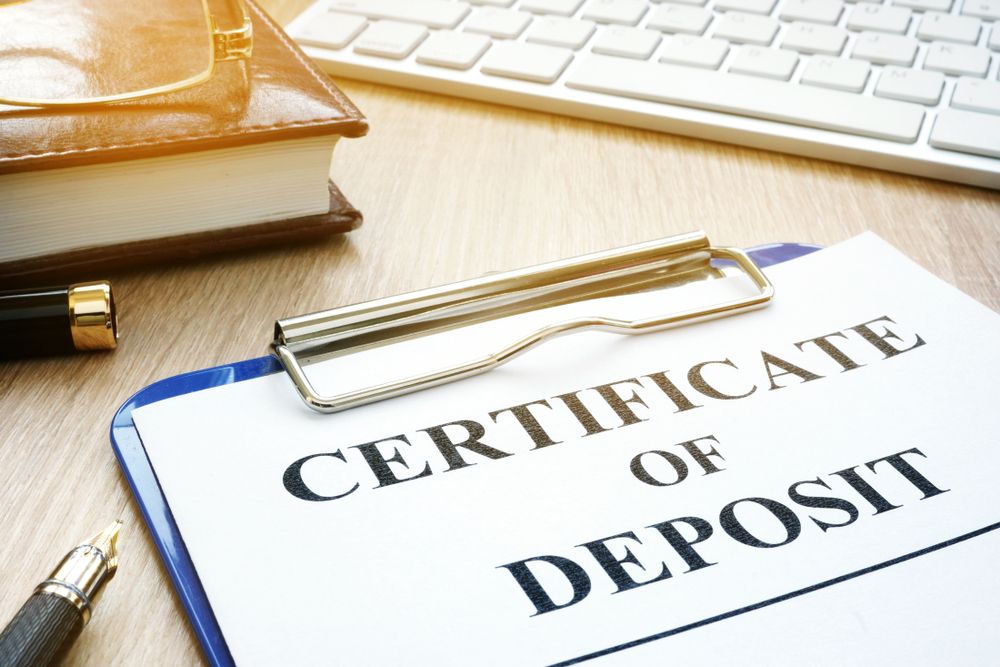
Welcome to the savvy investor’s guide to exploring high-yield certificate of deposit (CD) options! As you navigate the investment landscape, it’s crucial to understand the array of choices available to you, particularly those that offer a combination of security and higher returns. Certificates of Deposit, or CDs, are a cornerstone of conservative investment strategies. In this comprehensive guide, we’ll dive deep into the world of high-yield CDs, helping you to make informed decisions that align with your financial goals.
Understanding Certificates of Deposit
At its core, a Certificate of Deposit is a time-bound deposit held at a bank or financial institution that offers a fixed interest rate over a specified period. Unlike regular savings accounts, CDs typically provide higher interest rates in exchange for locking in your funds for a set term. The duration can range from a few months to several years, and typically, the longer the term, the higher the interest rate you can expect.
CDs are considered a low-risk investment because they are insured by the Federal Deposit Insurance Corporation (FDIC) up to $250,000 per depositor, per insured bank, for each account ownership category. This means that even if the bank fails, your investment is protected up to the insured limit.
The Appeal of High-Yield CDs
High-yield CDs stand out in the fixed-income investment world due to their higher interest rates compared to traditional CDs. These rates are often competitive with those of other fixed-income securities like bonds, but with the added benefit of FDIC insurance. This makes high-yield CDs an attractive option for investors looking for a safe place to park their money while still earning a decent return.
Furthermore, high-yield CDs can serve as a hedge against inflation, especially during periods of low-interest rates. By locking in a rate that’s higher than the average, you can preserve the purchasing power of your savings.
How to Shop for the Best CD Rates
Finding the best high-yield CD rates requires a bit of shopping around and strategy. Traditional brick-and-mortar banks, online banks, and credit unions all offer CDs, but their rates can vary significantly.
Online banks often provide higher interest rates than their brick-and-mortar counterparts because they have lower overhead costs. Credit unions, which are not-for-profit institutions, might also offer competitive rates to their members. To ensure you’re getting the best deal, compare rates from multiple institutions and consider using aggregator websites that list CD rates from various banks and credit unions.
Keep an eye out for promotional rates and special offers. Some financial institutions may provide limited-time rates that are higher than their standard offerings to attract new customers.
Strategies for Maximizing CD Returns
To maximize returns on CD investments, savvy investors employ various strategies. One popular approach is the CD ladder, which involves dividing your investment across several CDs with staggered maturity dates. This strategy provides regular access to portions of your funds while still taking advantage of higher rates offered by longer-term CDs.
Another tactic is to look for bump-up or step-up CDs, which allow you to increase your interest rate once or a few times during the term if rates go up. This option can be particularly beneficial in a rising interest rate environment.
Callable CDs might also offer higher rates, but with the caveat that the bank has the right to “call” or terminate the CD before its maturity date. This can be risky if interest rates fall because you might have to reinvest your funds at a lower rate.
Risks and Considerations When Investing in CDs
While CDs are a low-risk investment, there are still considerations to keep in mind. The most significant risk associated with CDs is the opportunity cost. By locking in your funds, you might miss out on higher returns from other investments, especially if interest rates rise after you’ve purchased your CD.
Early withdrawal penalties are another factor. If you need to access your money before the CD matures, you’ll likely face a penalty that could eat into your interest earnings and, in some cases, even your principal.
Inflation risk is also a concern. If the interest rate of your CD doesn’t keep pace with inflation, your purchasing power could decrease over time.
High-yield CDs offer a unique opportunity for investors seeking a blend of security and performance. Whether you’re looking to balance out a more aggressive portfolio or you’re taking a conservative approach to saving, understanding the intricacies of CDs is crucial. By shopping around for the best rates, employing savvy investment strategies, and considering the potential risks, you can make high-yield CDs work for you.
Remember, investing is a personal journey, and what works for one investor may not suit another. Consider your financial goals, risk tolerance, and investment timeline when exploring CD options. With the information and strategies provided in this guide, you’re well-equipped to navigate the world of high-yield CDs and make choices that will enhance your investment portfolio’s performance while maintaining a level of security that can bring you peace of mind.
